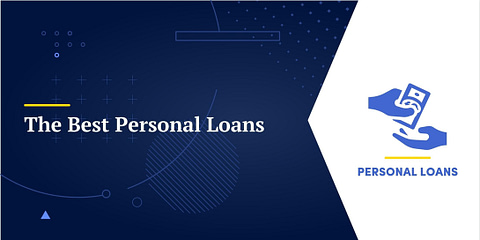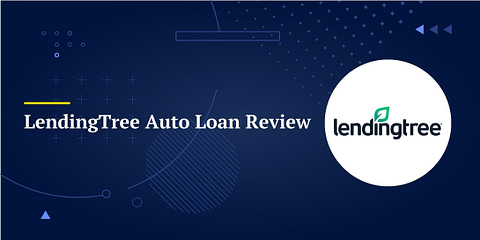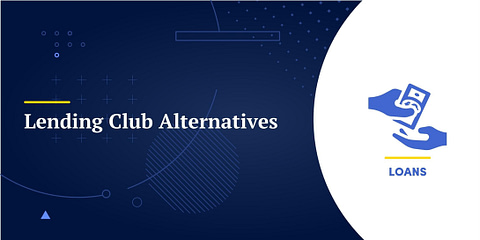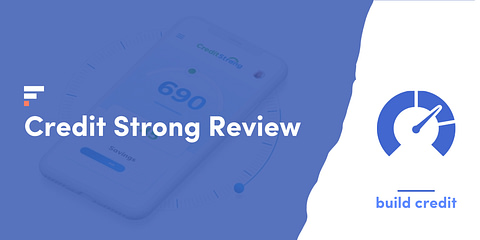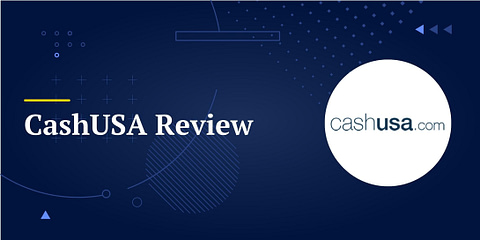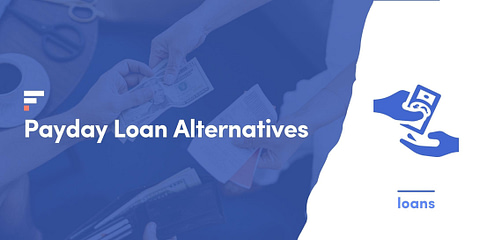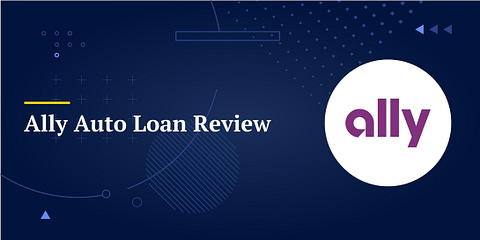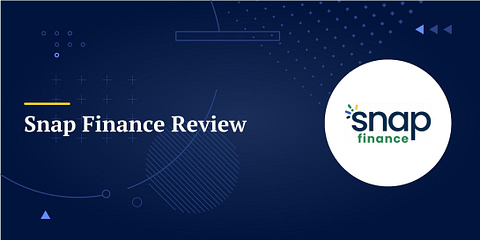1 in 7 Americans are carrying student loan debt, with an average balance of $37,667. If you’re one of them, you may have wondered if student loan refinancing could lighten your burden. But going down the path of refinancing seems to open up other uncertainties. How you go about refinancing? Is it the right financial decision to make?
Let’s take a closer look at refinancing and when it makes sense to refinance student loans.
What is Refinancing?
Refinancing is replacing a current loan with a new one. You take out a new loan and use it to pay off the old loan. You can get your new loan from your old lender or a new lender.
How Refinancing Can Help
Under the right circumstances, refinancing can deliver several benefits:
- A lower interest rate: if your credit score and financial status have improved since you got your old loan, you may be able to get a new loan at a significantly lower interest rate.
- Lower monthly payments: if your new loan has a longer term than your old one, your monthly payment could be lower. This can be an advantage if your payments are causing serious stress or you need to lower your debt-to-income ratio, but a longer term can also mean you pay more in interest over the life of the loan, even at a lower interest rate.
- Shorten your loan term: if you can afford larger monthly payments, a shorter loan term can help you retire your debt faster and cut your total interest cost.
- Remove a co-signer: If you have a co-signer on your old loan, getting a new one can free your cosigner from their obligation.
- New lender, which means new relationship: if you have a difficult relationship with your lender or you don’t like their customer service, refinancing can move your loan to a lender you like better.
Before you choose to refinance you should understand exactly what benefits you intend to gain. Don’t sign for a new loan until you’re sure that it will deliver the advantages you’re looking for.
Refinancing vs Consolidation
You often hear consolidation and refinancing discussed in the same conversation. It’s important to understand the similarities and differences.
Debt consolidation is a type of refinancing. If you use your refinancing loan to pay off more than one existing loan, you are consolidating your loans. Consolidation can help you simplify your financial life by replacing several payments with one. If you’re having trouble keeping track of your payments, that can be a big plus.
Consolidation can also bring all of the advantages of refinancing, but only if your new loan has better terms than the loans you’re paying off. That won’t always happen with student loans, as we’ll see later!
➗ Use our debt consolidation calculator to see how much you can save with a debt consolidation loan.
Refinancing Federal Student Loans
Loans from the federal government account for 92% of all US student debt[1]. The federal government does not refinance loans at a lower interest rate. If you want to refinance federal student loans at a lower interest rate you’ll have to do it with a private loan, and that will mean losing many of the advantages that federal loans offer.
Types of Federal Student Loans
There are two basic types of federal loans. Before you consider refinancing, you should know what type of loans you have.
Subsidized Loans
Direct Subsidized Loans are federal loans available to undergraduate students who demonstrate financial need.
👉 Interest does not accrue while you are in school, deferment, forbearance, and any other grace period. The U.S. Department of Education pays the interest during these periods.
If you have subsidized federal loans, refinancing is generally not a worthwhile option. It’s almost impossible to get a new loan with better terms than you’d get from a subsidized federal loan.
Unsubsidized Loans
Unsubsidized loans are available to both undergraduate and graduate students and there is no requirement to demonstrate financial need.
👉 Interest accrues on these loans while you are in school, deferment, forbearance, and any other grace period. If you have an unsubsidized loan, you’re responsible for paying the interest at all times during your repayment period.
There may be some circumstances where it would be advantageous to refinance an unsubsidized federal loan, but you should think very carefully before making that decision. The decision to refinance is permanent and irreversible, and you will lose the benefits offered by federal loans.
Benefits of Federal Student Loans
These are some of the benefits you will lose if you refinance a federal student loan with a private loan.
- Student loan forgiveness with the Public Service Loan Forgiveness (PSLF) program is for federal loans only. After 10 years or 120 loan payments, you may qualify to have the remaining balance of your federal loans forgiven if you work for a qualifying employer, including government organizations and non-profits.
- Income-based repayment plans, such as PAYE and REPAYE. These programs set your payments as a percentage of your income, which means your payment is lower during your “lean” years. As you earn more, your payment increases.
- Fixed interest rates. Interest rates on all federal student loans are fixed. Many private loans have variable rates.
- Forbearance and deferment options. If you hit hard times and can’t make your payments, federal student loans offer relatively liberal forbearance and deferment options.
- Repayment grace period. A six-month grace period after finishing school is available to students with federal student loans.
- Longer default period: Default on a federal student loan occurs after 90 days of missed payments. Private lenders are generally much quicker to declare you in default.
- Loans can be discharged. If a borrower passes away or is permanently disabled, the government will discharge the loans.
- Poor credit is allowed for consolidation. Unlike consolidation with a private lender, no credit check is required for consolidation.
- Future benefits. There is currently an active debate in Washington DC over forgiving some federal student loans. There’s no assurance that actual forgiveness will happen, but it will probably only apply to federal student loans if it does.
⚠️ These advantages are significant, and it’s critical to weigh the benefits carefully before choosing to refinance with a private loan.
Consolidating Federal Student Loans
The federal government does allow the consolidation of federal loans with another federal loan through the Direct Consolidation Loan program. Direct Consolidation Loans come with all the benefits associated with federal loans, such as eligibility for deferment and forbearance and multiple flexible repayment programs. There are no credit checks, and you won’t need a cosigner. If your parents took out federal loans to fund your education, you can include those loans in your Direct Consolidation Loan.
You will have to consolidate your federal student loans in order to qualify for government loan forgiveness programs, such as Public Loan Service Forgiveness (PSLF), or to pursue an income-based repayment plan such as PAYE or REPAYE.
☝ Consolidating federal loans will not change your interest rate. The rate of your new loan will be based on the rates of your old loans. If the consolidation loan has a longer term than your old loans your total interest payment may increase.
Be sure to study the advantages and disadvantages of Direct Consolidation Loans before deciding to use the program. There are many types of federal loans and you could lose some benefits associated with specific loan types.
Should I Ever Refinance Federal Student Loans?
Most borrowers will not want to refinance federal student loans. Since federal student loans are a large majority of the total outstanding student loans, that means most student loan borrowers will probably not want to refinance.
Most of the benefits that go with federal student loans are designed to help people who are having trouble paying their student loans. If you are not having any problems paying and don’t expect any change in your circumstances, those benefits may not be important to you. There are a few circumstances in which you might want to consider refinancing unsubsidized federal student loans.
👉 If you have a large, secure income, a low debt-to-income ratio, and very good to excellent credit, it may make sense to refinance all or some of your unsubsidized federal loans. You might be able to get a significantly lower rate and you might be able to get terms that help you to get out of debt faster and with less cost.
👉 You don’t have to refinance all of your federal loans. For example, if you used federal PLUS loans to finance graduate school, you are probably paying a higher rate on those loans than you are paying for your undergraduate loans. You might consider refinancing only the more expensive PLUS loans.
⚠️ If you are considering refinancing federal student loans you should consider your options very carefully and be absolutely sure that the advantages you gain are worth more to you than the benefits you will lose.
Refinancing Private Student Loans
Private student loans are made by banks, credit unions, and online lenders. Unlike the federal government, these lenders are out to make a profit. They base your interest rate on your credit score, income, debt-to-income ratio, and other financial indicators. Most students don’t have great credit, so they will have to pay high rates or get a cosigner to get a private student loan.
These features make private loans good candidates for refinancing. If your credit has improved since you got your loan, you may be able to get a significantly lower rate on a new loan. There are many competing lenders, and if you shop carefully you may be able to get a new loan with terms that suit your needs better.
There are three key steps to making refinancing work for you.
- Know what you want to accomplish. You can’t get what you want if you don’t know what you want. Before you begin looking at lenders you should have a very clear idea of what you hope to achieve by refinancing.
- Shop around. This is true of all loans, but that doesn’t make it any less important. There are lots of lenders out there and the terms they offer may vary considerably.
- Compare your offers to your existing loans. If your best offer is not substantially better than your existing terms, or if it would not achieve the goals you’ve set, student loan refinancing may not be worth the effort.
Refinancing student loans is not much different than refinancing a mortgage or a car loan. In each case you’re looking to achieve specific goals related to your loan. If you’re offered a loan that achieves those goals, refinancing is probably a good move.
Use the student loan refinancing calculator below to see how much you can save if you choose to refinance your student loans:
➗ Go to the full page to view and use the calculator.
When Should I Refinance My Student Loans?
There is no defined time for you to refinance student loans, but there are times when it makes more sense to consider it.
- You have graduated from school.
- Your credit score has improved since you got your old loan.
- You are confident that your finances and employment are secure.
- You have a full-time job.
- Your debt-to-income ratio is low.
It’s important to remember that considering student loan refinancing doesn’t commit you to anything. If you think you might benefit, it’s worth looking into the possibility and getting the information you need to make a fully informed decision.
Just be sure that if you apply to multiple lenders to compare rates, you keep your applications within a 15-day period. The credit reporting bureaus will recognize that you are loan shopping and they will only record one hard inquiry on your credit report.
💡 If it doesn’t look like refinancing student loans will help you, there are other things you can do. Check out these tips for paying off student loan debt.
How Much Can I Save by Refinancing My Student Loans?
Your mileage may vary, but lowering your interest rate by even a single percentage point can save you thousands of dollars. And that’s to say nothing of the increased spending (and saving!) power gained by lowering your monthly payments.
👉 For Example
Imagine you owe $30,000 in student loan debt, which is slightly over the current national average. The average interest rate is 5.8%[2]. This means that if you pay your student loans off in ten years, you’ll pay $330 per month, adding up to $39,600 over the lifetime of your loan.
Now, I imagine that you take the same loan but reduce the interest rate to just 4.8%. Your monthly payments are now $315, and you’ll only pay $37,832 over your total loan.
Admittedly, the difference isn’t terribly dramatic. But for some borrowers, any possible advantage can help tremendously. And if you can improve your credit score, you might be able to secure an even greater drop in your interest rates.
What Are the Average Student Loan Refinance Rates?
There are numerous lenders competing for your business. That competition is good for you, and so is the relatively low interest rate environment that prevails at this time (February 2021).
Student loan refinancing rates range from 1.12% up to 8.49% or higher, with variable or fixed rate options available[2]. The rates you are offered will depend on a number of factors, including your income and your credit score.
💡 Remember that there are ways to earn discounts on your interest rate. Many lenders offer incentives if you select automatic payments each month. They may also give discounts if you have multiple accounts, such as an auto loan or checking account, with the same institution.
FAQs
Unlike other types of debt, student loan refinancing typically carries no fees. This means that you’ll be able to switch lenders for absolutely nothing.
Some private lenders may charge an early repayment penalty, but this is uncommon for student loans. Just make sure you keep up with your monthly payments during the transition, lest you incur a penalty for late payments.
Unlike other major purchases, educational expenses aren’t always a one-and-done deal. You might have more than one student loan, each with its own terms, interest rate, and deadline.
Can you refinance multiple student loans? Yes. In fact, many lenders will allow you to consolidate your student loans and secure one affordable interest rate.
There’s no limit to the number of times you can refinance your student loans. If you refinance your loan this year only to discover a better offer a few years from now, you’re free to refinance your loan all over again.
Just be aware that some lenders have minimum balance requirements, which means that the more time that goes by, the fewer options you’ll have.
In 2022, President Biden made good on his plan to forgive as much as $20,000 in federal student debt per borrower[2]. Under the current plan, the federal government plans to forgive at least $10,000 of federal student debt.
It’s possible to receive this debt relief from the government, then refinance your remaining balance through a private lender. But as before, you’ll be cutting yourself off from any future benefits, so this still doesn’t make refinancing a good option in most cases.
Another option you might consider is consolidating your federal student loans through a direct consolidation loan. Doing so won’t save you money or lower your interest rate, but it can make it easier to keep track of your payments. You might even avoid late payments that cause you to have to pay penalties.
Refinancing student loans is a major decision and it shouldn’t be taken lightly. If you have private loans – or in some circumstances unsubsidized federal loans – it may be worth considering. If you have a clear understanding of what you hope to gain, you have shopped for the best deal, and it’s clear that you’re being offered a better deal than you have now, it can be a very useful option.




